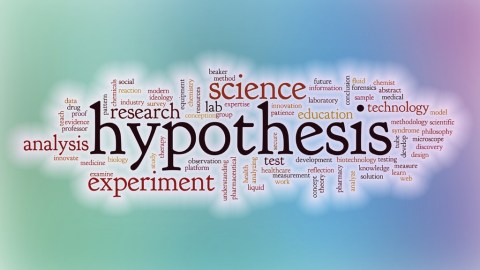A Quick and Easy Guide to Understanding Scientists

Scientists don’t use normal words when they talk about science. They use words that sound like normal words — theory, model, significant — but have different meanings when applied to science research. That’s perfectly fine when they’re speaking with other scientists, but when speaking with you and me? That’s a problem. Those words started out as having specific scientific meanings, but got adopted into public speech with completely different ones. That makes them more confusing than they should be. To help clear up that confusion, here’s a quick primer on the 6 most commonly misunderstood words scientists use when talking to the public:
THEORY
Normal use: I don’t believe in climate change! That’s just a theory – there’s no proof.
Scientific use: We need to take action against climate change. It’s a proven theory.
Most people hear the word “theory” and assume it’s an idea or statement in need of proof. A scientist hears the word “theory” and recognizes it as certifiable fact because it’s been proven. Scientific theories from Einstein to Darwin to climate change have all moved from a hypothetical idea through repeated bouts of testing to become a proven model. They are not opinions. They are a framework for facts. Speaking of hypotheticals…
HYPOTHESIS
Normal use: I’m not sure what’s happening with global warming, but here’s my hypothesis.
Scientific use: I’m not sure what’s happening with global warming, but I think it’s got something to do with greenhouse gases. Here’s my hypothesis for testing it out.
You and I hear the word “hypothesis” and assume it’s an educated guess. Scientists consider a hypothesis as the first stop on an idea’s journey to becoming a theory. Basically, a hypothesis is an unproven theory – a statement that lays out the direction of an experiment. It includes ways to measure what a scientist will do in the experiment and what will happen when they do those things. It’s the framework for a test. Not a guess.
MODEL
Normal use: I totally know how this thing works! See – here’s a model.
Scientific use: I don’t know how this thing works. Let’s make a model to find out.
Model is a tricky scientific word. It means different things in different disciplines. In physics, it means a computer simulation that helps them perform a calculation. In mathematics, it’s an abstract that uses mathematical language to predict a system’s behavior. The unifying theme for all scientists is that a model is a testable idea. A scientific model uses known data to create a representation of something that’s hard to easily know — like the universe, or the growth of a particular strand of DNA given a certain number of factors. Normal people think of models as ideal versions of something, like a supermodel — or a scaled replica of a real-world item, like a toy airplane. Basically, this one word means so many things that it’s meaning is entirely dependent upon context. It requires a quick Google for everyone.
SKEPTIC
Normal use: I don’t believe in global warming. I’m skeptical.
Scientific use: Can you reproduce this experiment? I’m skeptical of these results.
Most people think a skeptic is someone who questions everything because it’s in their DNA to doubt. Scientists use the word “skeptic” to define a practice, not a person. To scientists, being skeptical is the practice of reviewing scientific claims’ adherence to data and reproducibility. It’s a philosophy, a way to keep results honest and information clear. It’s the “self-correcting machinery of science,” as Carl Sagan put it. It’s not just an expression of doubt.
SIGNIFICANT
Normal use: So Jim’s officially your significant other? When are you guys getting married?!
Scientific use: We’ve run this experiment 12 times and keep getting this result. It must be significant. It keeps happening.
This word might be the most misunderstood. You and I use the word “significant” to mean “important.” To a scientist, “significant” means a result that’s large enough to matter and unlikely to occur by chance. That said, the American Statistical Association released a statement last month calling for a revision to the current means of statistical significance, so the idea of scientific significance will change soon. The key thing to remember is that “significant” isn’t an amount to a scientist; it’s a marker that leads them toward a solution. It’s just relevant, not necessarily important. Until it’s been tested.
NATURAL
Normal use: These muffins must be good – they’re all-natural.
Scientific use: The earthquake pattern along this fault line is natural – it has a pattern.
The word “natural,” as we’ve touched on already, is incredibly misleading. Most people think of natural things as healthy and nourishing. A natural thing like a fruit or water comes directly from the Earth and isn’t manufactured by humans. To a scientist, anything made by the universe is natural, manmade or not. Natural is a state of being, and just as easily applies to fruit and water as it does to uranium and plasma. Natural things are testable, and behave in predictable ways. Natural is a state of being, not a label.
These are just a few of many, many other scientific words that get mangled in communication. The gap between what a scientist thinks a word means and what you and I think a word means is a pretty big one. But that’s no reason to not engage in the conversation. We all care about the discovery. We just need it explained in context, with non-jargony words. Like in this video where Michio Kaku explains the Theory of Everything in language everyone can understand. Until all scientific communication is as clear as that, you’ve got the inside scoop on the most confusing words in science-speak.





